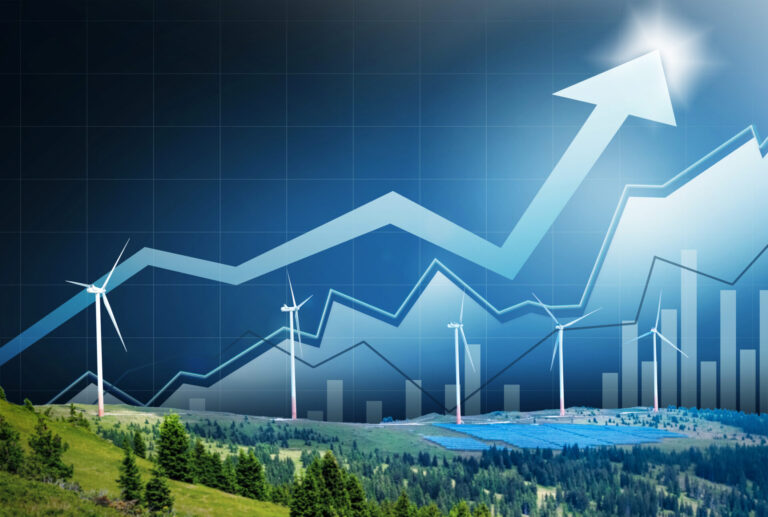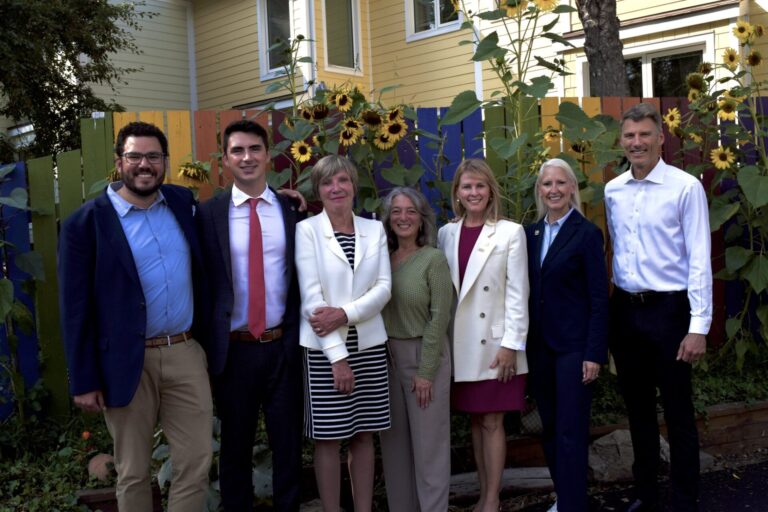Friday, September 26, 2025
The Independent Electricity System Operator (IESO), the operator of the Ontario power system, with support from the government of Ontario, recently decided to invite an entire new category of energy entrepreneurs into its electricity contract market—small scale generators. This move can be expected to stimulate competition while significantly widening the options available to energy consumers.
“The new generation stream opens the door for something even more exciting: building new, community-owned renewable energy projects,” says John Kirkwood, President of OREC, the Ottawa Renewable Energy Cooperative. “This is the kind of policy we’ve been waiting for. It not only keeps our current projects viable, but also gives us the opportunity to grow and develop new, meaningful infrastructure in collaboration with our members and communities.”
On April 23, more than 200 interested parties joined the IESO’s first webinar on the new Local Generation Program. The wide range of proponents is seen as an indication that there will be no shortage of willing participants once the program is up and running in 2026. The IESO plans to host monthly consultation meetings throughout most of 2025 as it finalizes the details of the new program. (To view the IESO Stakeholder Engagement Session video, click here.)
The Local Generation Program was authorized by a directive from the Minister of Energy in late 2024. “The Government of Ontario recognizes that distributed energy resources (DERs), such as smaller scale, distribution-connected generation, can offer value to our electricity system at a time of unprecedented demand growth,” said the Minister’s Directive. “Locally sited resources can help support municipal clean energy commitments, address local energy supply concerns, and empower more Ontario customers and businesses to participate in the electricity system.”
“The new generation stream opens the door for something even more exciting: building new, community-owned renewable energy projects.”
Colin Anderson, President and CEO of the Association of Power Producers of Ontario, sees no conflict with other supply programs. He says, “Given the size of the demand increase that the IESO is forecasting—a 75 per cent increase by 2050—Ontario will need to employ an ‘all of the above’ approach to generation.”
This initiative may be more transformative than appears on the surface. Instead of being passive recipients of bulk electricity at prices outside their control, many consumers in Ontario could soon be able to economically generate their own power, manage significant grid interaction—including making strategic use of electric vehicle charging with intelligent market-sensitive software, or participate in community-based energy hubs that make the grid more efficient and share the resulting savings amongst participants. (Although local generation will often be paired in practice with energy storage and other infrastructure investments, contracts under the Local Generation Program will pay for generation only, not for energy storage or other aspects of energy project investments.)
The supply technology is changing, the options for customers to interact with the grid are changing, and the market is changing. Therefore, the grid will also be changing.
With a new public program for local generation under development, the profit motive can be expected to drive a multitude of creative initiatives intended to find pockets of underused capabilities and remarket them as high-value services.
Could DERs collectively represent a sleeping giant about to awaken, offering attractive new resources, just when society is seeking large investments in new capacity that can deliver environmentally responsible energy services at reasonable prices? Ontario’s new local generation program will be an excellent way to find out.

What DERs could do for the energy system
DERs are often considered one of the most promising categories of new energy technology. They have been growing rapidly in markets from Europe to Australia to North America. Because DERs are located close to the end users, they are typically able to respond very precisely to customer needs, and to real time market conditions, all without incurring the power loss in transmission and transformation that are characteristic of large-scale resources located at great distances from most consumers.
Employing a wide range of technologies that leverage local and regional advantages, DERs may include installations such as solar panels, high efficiency co-generation, demand response, biomass and geothermal resources, combined with battery banks and EV charging stations. The economies of scale that have for years favoured energy megaprojects could be challenged at the margins by “economies of manufacturing” where thousands of small-scale power generation units can be efficiently mass produced and managed “in concert” by smart control systems. Some jurisdictions are even paying local resources for assisting the grid through local flexibility markets. The potential effects on the shape of future growth are quite significant.
Locally produced electricity is often beneficial to the grid and cost-saving for consumers precisely because it is produced close to the point of consumption. When deployed efficiently, this kind of advantageous location can lower not only the amount of electricity that is lost in transmission but also the capital cost of infrastructure needed to move electricity from one part of the system to another.
Policy makers, regulators and private investors have in some cases begun treating small scale initiatives collectively as a major new energy resource capable of both reinforcing and greening the grid. For example, in the United States, innovative companies are aggregating thousands of DERs into Virtual Power Plants (VPPs), providing power services comparable to major new generation projects. While VPPs can’t be expected to replace all of society’s needs for wholesale generation, recent research finds that they could take a bite out of the need for new infrastructure, building critically needed power capacity relatively quickly and economically, and with smaller environmental footprints than some of their potential large scale competitors.
It now appears that market forces and new forms of competition will influence how market share gets divided up between large-scale and small-scale resources in the years ahead. Ultimately this could spell significant change for the power grid at the same time as increasing electrification makes the grid more important than ever.

How will the new program work?
In Ontario, the principles for most new electricity supply come from directives and policies set by the provincial government, while the design of procurement programs is managed by the IESO.
The IESO uses a Resource Adequacy Framework to guide how key features and terms of its procurement programs will be chosen. Certain mechanisms work better for securing short term resources while others are more effective for stabilizing long-term certainty of supply.
The IESO outlines five categories of procurement as follows: Capacity Auction; Medium-Term Procurements; Long-Term Procurements; Programs; and, Bilateral Negotiations.
Local Generation will be slotted under the fourth category, procurement programs. Since the end of the MicroFIT program, Ontario has not had a program to substantially encourage the development of new Distributed Energy Resources, until now.
Will the new local generators compete against each other at the same time as they compete against conventional forms of power? Unfortunately, the Ontario market is not yet capable of supporting direct real time competition between large- and small-scale resources. Nonetheless, data on the price of energy purchased under each round of the Local Generation Program will become visible to the public.
This will inevitably be compared with data on prices paid under other procurements, creating economic pressure on participants and an indirect form of competition. In addition, the IESO has a consultation process underway designed to facilitate DERs bidding into the wholesale market in aggregated forms. The Enabling Resources program anticipates transactions of this nature within a year or two, further enhancing competition.
“Policy makers, regulators and private investors have begun treating small scale initiatives collectively as a major new energy resource capable of both reinforcing and greening the grid.”
What does the future hold?
According to the Minister’s Directive, the IESO will be rolling out Ontario’s new local generation program in early 2026. IESO staff anticipate that there will be two streams, one for “new build” generation and one for existing facilities, with a call for proposals in each stream once per year. The two streams will be staggered, resulting in approximately six months between calls. The upper size limit is expected to be 10 Megawatts (MW). Contracts for new build are expected to be 20 years, while contracts for existing facilities are expected to be five years. Electricity produced and consumed within a single entity (“behind the meter”) will not qualify because the IESO has an electricity demand side management suite of programs that covers behind the meter generation. However, most details of the program’s design are still under discussion.
Ontario has 60 Local Distribution Companies (LDCs) covering all regions of the province. The IESO is of course developing its local generation program in consultation with the LDCs which will ultimately be the frontline for connecting local generation projects. In fact, LDCs may well be in the forefront of this new industry.
There are no predetermined overall targets for new capacity to be secured through the Local Generation Program but there will be a certain amount of eligible projects specified in MW for each program call. The IESO anticipates completing contracts to reach approximately 80 per cent of the eligible project volume in each call, depending on pricing and other factors.
DERs like those anticipated in the Local Generation Program represent a variety of new business opportunities that, if appropriately deployed, could make the electricity system more efficient, contribute to affordability for consumers, and support environmentally responsible local economic development.
It is possible and even likely that a number of Ontario consumers and businesses will soon be hosting or neighbouring new local generation projects that will supply power in new ways, while challenging the boundaries of traditional energy businesses. They may be part of a worldwide trend towards energy grids that are more participatory and community-based. They could help improve Ontario’s energy self-reliance, a characteristic that has lately been rising rapidly in value. It could also benefit the popularity of the current Ontario government, which deserves credit for mandating the program and moving it forward as part of provincial energy policy.
Ontario is not the first jurisdiction to clear a path for DERs, but it appears committed to doing so in a systematic way that could significantly alter how Ontarians produce and consume energy. The potential for speedy development of beneficial new technology and innovative business models is unprecedented.
Jake Brooks is an energy consultant who served as Executive Director of the Association of Power Producers of Ontario for many years.
For further information, readers are encouraged to visit the IESO website and search for “local generation program.”
To view the original version of this article and access multimedia features, click here.













